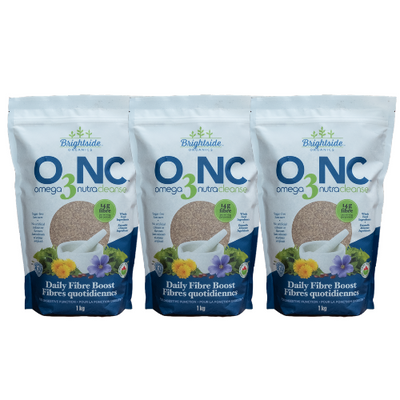How Well Do You Know Your Gluten-Free Grains?
With more and more people committing to a gluten-free diet, the question of which grains are gluten-free comes up a lot. Here’s a non-conclusive list of popular gluten-free grains:
Quinoa
Technically a seed, quinoa is a fabulous replacement for grains that may contain gluten. It’s also a good source of protein, making it ideal for those who have vegetarian and/or vegan diets. Quinoa boasts anti-inflammatory benefits and can help lower cholesterol.
Oats
Oats are gluten-free, but come with a disclaimer: many oat crops suffer from cross-pollination from neighbouring wheat fields, rendering them not gluten-free. To be sure the oats you’re eating are free of gluten, look specifically for a gluten-free label—these oats originate from fields nowhere close to wheat crops.
Buckwheat
Although ‘wheat’ is in the name, buckwheat contains no actual wheat. It’s gluten-free! (And technically a seed, like quinoa.) Its nutritional profile boasts high levels of vitamin B6, pantothenic acid, niacin, folate, thiamin and choline.
Millet
Often the main ingredient in bird seed, millet is very high in minerals (copper, magnesium, manganese, and phosphorus) and a healthy alternative to grains containing gluten. Couscous, a Middle Eastern dish, is traditionally made with cracked millet.
Rice
Rice—especially sprouted brown rice—is a great grain to incorporate into any diet. It’s super versatile, and definitely gluten-free.
Grains that definitely DO contain gluten include wheat, barley, rye, and triticale. If you’re consuming a completely gluten-free diet, it’s best to avoid these ones.
Quinoa
Technically a seed, quinoa is a fabulous replacement for grains that may contain gluten. It’s also a good source of protein, making it ideal for those who have vegetarian and/or vegan diets. Quinoa boasts anti-inflammatory benefits and can help lower cholesterol.
Oats
Oats are gluten-free, but come with a disclaimer: many oat crops suffer from cross-pollination from neighbouring wheat fields, rendering them not gluten-free. To be sure the oats you’re eating are free of gluten, look specifically for a gluten-free label—these oats originate from fields nowhere close to wheat crops.
Buckwheat
Although ‘wheat’ is in the name, buckwheat contains no actual wheat. It’s gluten-free! (And technically a seed, like quinoa.) Its nutritional profile boasts high levels of vitamin B6, pantothenic acid, niacin, folate, thiamin and choline.
Millet
Often the main ingredient in bird seed, millet is very high in minerals (copper, magnesium, manganese, and phosphorus) and a healthy alternative to grains containing gluten. Couscous, a Middle Eastern dish, is traditionally made with cracked millet.
Rice
Rice—especially sprouted brown rice—is a great grain to incorporate into any diet. It’s super versatile, and definitely gluten-free.
Grains that definitely DO contain gluten include wheat, barley, rye, and triticale. If you’re consuming a completely gluten-free diet, it’s best to avoid these ones.


